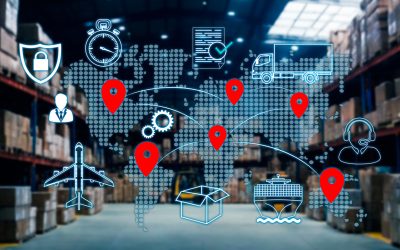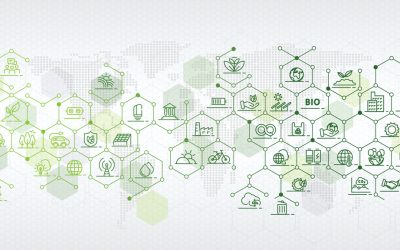
In recent years, the concept of achieving “net zero” has gained significant traction in the realm of sustainability, particularly concerning business practices. With the looming threat of climate change, there’s an urgent need for companies to address their carbon emissions and environmental impact. But what exactly does “net zero” mean, and how can businesses work towards achieving it?
What is Net Zero?
Net zero refers to the state where the amount of greenhouse gases (GHGs) emitted into the atmosphere is balanced by the amount removed or offset. In simpler terms, it means achieving a balance between the emissions produced and those removed from the atmosphere. This balance is crucial for mitigating climate change and keeping global temperatures within manageable limits.
How is Net Zero measured?
Measuring net zero involves calculating an organisation’s total greenhouse gas emissions and then offsetting or removing an equivalent amount from the atmosphere. The most common approach is to use the Greenhouse Gas Protocol, developed by the World Resources Institute (WRI) and the World Business Council for Sustainable Development (WBCSD). This protocol categorises emissions into three scopes:
- Scope 1: Direct emissions from sources that are owned or controlled by the organisation (e.g., emissions from company-owned vehicles or facilities).
- Scope 2: Indirect emissions from purchased electricity, heat, or steam consumed by the organisation.
- Scope 3: Indirect emissions that occur in the value chain of the organisation, including both upstream and downstream activities (e.g., emissions from transportation, procurement, and waste disposal).
How can you achieve Net Zero?
Achieving net zero requires a multi-faceted approach that involves reducing emissions wherever possible and offsetting or removing unavoidable emissions. Here are some strategies that businesses can adopt:
- Energy Efficiency and Renewable Energy: Transitioning to renewable energy sources such as solar or wind power can significantly reduce Scope 1 and Scope 2 emissions. Additionally, improving energy efficiency in operations and facilities can further minimise emissions.
- Supply Chain Optimisation: Collaborating with suppliers to reduce emissions throughout the supply chain can help tackle Scope 3 emissions. This may involve sourcing materials locally, optimising transportation routes or encouraging suppliers to adopt sustainable practices.
- Carbon Offsetting: Businesses can invest in carbon offset projects for emissions that cannot be eliminated through reduction measures. These projects typically involve activities such as reforestation or investing in renewable energy projects in developing countries.
- Carbon Capture and Storage (CCS): Technologies such as carbon capture and storage enable businesses to capture CO2 emissions from industrial processes and store them underground, preventing them from entering the atmosphere.
- Circular Economy Practices: Adopting circular economy principles, such as reducing waste, recycling materials, and designing products for longevity, can help minimise emissions associated with resource extraction and disposal.
Achieving net zero is a vital goal for businesses committed to sustainability and combating climate change. By measuring and reducing their carbon footprint across all scopes, implementing renewable energy solutions, optimising supply chains, and investing in carbon offsetting and removal strategies, companies can play a significant role in transitioning to a low-carbon economy.
Achieving net zero requires concerted efforts and collaboration across industries, governments, and civil society to create a more sustainable future for generations to come.
References:
– World Resources Institute (WRI). (2021). Greenhouse Gas Protocol. Retrieved from https://ghgprotocol.org/
– World Business Council for Sustainable Development (WBCSD). (n.d.). Greenhouse Gas Protocol. Retrieved from https://ghgprotocol.org/
– International Energy Agency (IEA). (2020). Net Zero by 2050: A Roadmap for the Global Energy Sector. Retrieved from https://www.iea.org/reports/net-zero-by-2050
What are the 9 Planetary Boundaries and why do they matter?
The planetary boundaries framework, first introduced in 2009 by Swedish scientist Johan Rockström and his colleagues, updated in subsequent...
Scope 3 vs. Scope 4 Emissions in Business Sustainability: Understanding the difference
In the realm of business sustainability, understanding and mitigating greenhouse gas emissions have become paramount. Among the various categories...
Scope 4 emissions: Addressing Upstream and Downstream emissions
In recent years, the conversation surrounding sustainability in business has expanded beyond just internal operations to encompass the entire value...
Understanding Emissions Scopes: What are scope 1, 2 and 3 emissions?
Understanding and effectively managing greenhouse gas emissions is essential in Business Sustainability. Emissions are commonly categorised into...
Embarking on a Business Sustainability Journey: Key Steps to Get Started
In today's increasingly environmentally-conscious world, businesses are recognising the importance of integrating sustainability into their...
What is Business Sustainability? Building a Sustainable Future
Building a Sustainable Future: The Key Elements of Business Sustainability In today's world, the concept of sustainability has become more than just...






